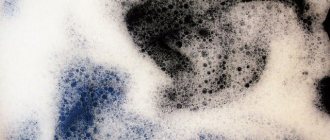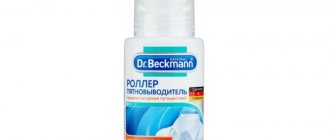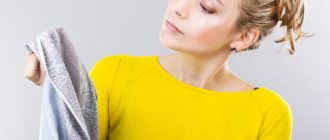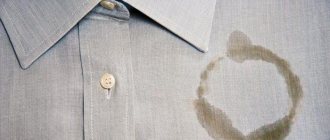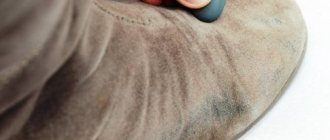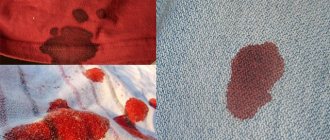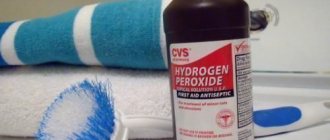How to remove construction dust
The renovation is complete, but the apartment or house is covered with a layer of fine, ubiquitous dust. Many people are familiar with this picture. How to remove construction dust? Let’s say right away that you will have to clean it more than once. You will need a good spray bottle and a powerful vacuum cleaner, a bucket and many, many rags. It is better to use a construction vacuum cleaner, with a long hose and a telescopic nozzle.
It's good to have helpers
If you have a humidifier with an ionizer, you can use it instead of a spray bottle. But it must be left in each room for a couple of hours. Too long if there are several rooms to clean.
Close the windows/doors in the apartment, then you can start cleaning up construction dust. If the ventilation works well, you can cover it while cleaning. Let’s say right away that you will have to repeat everything more than once; you need to clean all rooms, moving from one to another. The technique is this:
- We set the spray bottle to the finest water mist and spray a certain amount higher into the air. Water dust settles, capturing dust particles that are in the air. A wet crust forms on the floor. If the layer of dust on the floor is significant, it is better to wait until it dries and vacuum it up.
Need a good vacuum cleaner - Leave the room for at least an hour to allow the water to dry. We make sure that there is no draft that could raise settled dust into the air.
- The vacuum cleaner is in the next room, and we bring a hose with a nozzle into the room and collect dust with the vacuum cleaner.
- We repeat the “event” until the air becomes relatively clean and there is a minimum of dust on the floor.
Next you need to wash the floor. If the air has cleared sufficiently and after the next vacuum cleaner there are no dust swirls in the air, you can not spray water mist. We take more water, a lot of rags. Mopping the floor. The rag and water should be changed as often as possible. If possible, it is better to rinse the rag in running water every time.
You run into the bathroom, of course, but cleaning is more efficient this way. Don't try to wash it completely yet. The main task is to remove the volatile fine fraction. It can only be cleaned with water and a cloth. If you have a cyclone washing vacuum cleaner (with a water tank through which air is passed and the sucked dust settles in the water), you can adapt it. He does an excellent job - quickly and efficiently.
To learn how to make a cyclone-type aquafilter for a household vacuum cleaner, see the video below.
Then we clean the vacuum cleaner, wash the brush or put on a clean/new one. The second option is preferable. We remove dust from the ceiling and walls with a vacuum cleaner. You can walk several times. Then - the floor again, then - windows and doors. Don't forget to wipe down the tops of doors. There's a lot of dust there. When the doors are closed, it is sprayed throughout the room.
You don't need expensive products to clean the floor after renovation.
Having removed dust from all vertical surfaces, we wipe the floor again, washing the rag often. If there are white stains on the doors or windows, add vinegar or citric acid to the water. You can add a little dishwashing detergent. After treatment with this composition, there should be fewer streaks.
While you wash the floor with just water, it seems that the dust is simply smeared. There are white streaks all over the floor. When you have already cleaned the walls and ceiling, you can try to clean the floor more efficiently. You need to add to the water:
- A little vinegar. Regular, food grade alcohol - 6-8%. Half a glass for a bucket of water.
- Table salt. In a bucket of warm water with 1/3 cup or so. Stir until dissolved.
- A couple of tablespoons of vegetable oil.
Water with vinegar and/or salt is quite effective in combating white stains from construction dust.
To get rid of white stains on the floor, you can try all three products in turn. Every “additive”—salt and vinegar—works, but in some places one is more effective, in others another. Depends on the composition of the dust (its source, to be more precise). For faster results, you can immediately use salt and vinegar. They don't interfere with each other. Vinegar has an unpleasant odor and can be replaced with citric acid.
These simple home remedies help quickly remove dust from the floor after renovation and get rid of stains. In principle, as soon as the layer of dust on the floor has become very small, you can add salt and vinegar. There will be fewer stains, but the water must be changed frequently. Water with vegetable oil will help to completely remove white deposits from the floor - linoleum, laminate, tiles.
We suggest you familiarize yourself with Smoke from the drum of a washing machine after a spin || Smoke from the washing machine drum after spinning
It is better to wipe off dried plaster stains as dry as possible. If there are tiles on the floor, just scrape it off with something, but try not to scratch it. For softer surfaces—linoleum—soak with acidified water (add vinegar) and scrub off little by little. If it is too difficult, any product with active acids will help to clean the floor.
Among the most affordable are Toilet Duckling and similar products for the toilet or bathroom. But first read the composition - hydrochloric or any other acid should be indicated there. Just don’t try it on linoleum, parquet or laminate. Most likely, the coating will be damaged. If there is scrap material, test the product on it. After testing, is there any damage or discoloration? Try cleaning the plaster from the floor with this product.
How to clean linoleum after repair - with simple means: water, vinegar, dishwashing detergent
To clean the floor from putty or plaster, first try diluting a capful of the found acidic product in a small amount of water (a liter or one and a half). Apply the solution to the stain and wait a few minutes. Let's try to scrub it off. It helped - great. No, we're trying to increase concentration. Particularly persistent ones can be treated with an undiluted product. But if it doesn’t help, most likely you need to look for another remedy.
You can try softening plaster or putty stains with kerosene. Drop a couple of drops and wait, then try to wipe it off. But remember that it is better not to apply kerosene to laminate and linoleum.
When working with acids or kerosene, try to breathe “to the side.” Literally. The acid and kerosene evaporate and the vapor enters the lungs and can cause severe coughing. If you breathe long enough, it can even cause poisoning. In general, open the windows, ventilate and be careful. Whitewash, putty and other repair compounds are removed in the same way.
How to wash laminate flooring without streaks?
Laminate is a capricious coating; it cannot be washed with aggressive preparations; stains are visible on it; stains from some substances are almost impossible to remove. But it is possible to deal with all problems if you know what and how.
If marks and stains remain regularly after washing, proceed as follows:
- At the first stage, carry out dry cleaning. A vacuum cleaner with a special soft attachment or a brush with soft bristles is suitable for this;
- Next is the turn of wet cleaning. Today, there are many products sold in the store, all of which promise excellent results. But it is better to use warm water and vinegar, it is environmentally friendly and cheap. You will need to dilute 9% vinegar (50 ml) in hot, but not boiled water (1 liter). Vinegar neutralizes alkali, which leaves streaks on a smooth surface. What’s interesting is that after this there is no need to wipe it dry, everything dries itself instantly. For wet cleaning tools, take a rope mop or flounder with a mop;
- If you washed without vinegar, the remaining moisture must be wiped dry. For this you need a separate rag.
And one more tip: to avoid leaving traces, the water must be changed as soon as it becomes cloudy in the bucket. Rinse the rag under a clean stream.
Types of cleaning
- Sweep the floor constantly. Do dry cleaning, sweeping the floor with a broom once every two days.
- Although laminate is a fairly scratch-resistant surface, constantly sweeping away sand, dust, hair, and other things will help avoid scratches and other deformations.
- Do not use mops or attachments with hard bristles. Hard pile can scratch the laminate.
- Mark along the laminate planks to remove any debris stuck in the grooves between them.
Instead of a mop, you can also use a vacuum cleaner with a soft attachment.
- Do not allow any liquid, even water, to remain on the laminate for long periods of time. This can cause deformation and damage to the protective layer.
Absorb the liquid with a rag, sponge or wipes.
Initially, it should be said that there are two types of cleaning laminate flooring.
How to properly wash laminate flooring so as not to get a whitish coating and stains
Can laminate flooring be washed with water? As already mentioned, it is better to use water for household surfaces no more than once a week. When washing, certain nuances are taken into account.
To avoid smudges, when washing laminate flooring, you should dry the cloth well so that there is not a lot of water on it. You also need to change the water after each rinse and rinse the floor 2-3 times.
In addition, table vinegar (you need to add 2-3 spoons per bucket of liquid) or a glass and mirror cleaning spray will help to wash the laminate flooring after renovation without whitish streaks.
If after washing there is a whitish residue left, you can get rid of it with a piece of felt or wool. But linseed oil or special rubs for this coating will help make the laminate shine again.
To avoid smudges, when washing laminate flooring, you should dry the cloth well so that there is not a lot of water on it. You also need to change the water after each rinse and rinse the floor 2-3 times.
How to clean parquet after renovation
In principle, it is quite easy to care for parquet floors or parquet boards. However, there are some rules that should be followed.
Parquet does not like moisture, so there is no need to wash it, but simply wipe it with a damp cloth. To clean parquet from stains, including after repairs, you should use specific parquet care products. For example, Parquet wash amp is perfect for varnished parquet; shine.
Vacuum cleaners with a steam cleaner or washing vacuum cleaners should not be used to clean parquet floors. Their use can cause parquet to permanently lose its appearance and even swell. You only need to vacuum the parquet with a nozzle equipped with soft wheels.
- Moisten a rag with simple hand cream and wipe the stain with it.
- Pour a small amount of cologne onto the stain, then wipe the floor with a cotton swab. Then treat with a damp cloth and, without wiping the surface, let it dry on its own.
We suggest you read How to clean a frying pan from carbon deposits: 25 best ways
Removing stains from parquet directly depends on the nature of the contamination. If the dirt is water-soluble materials (whitewash, putty, dirt, water-based paint), then it can be eliminated using detergent diluted in plain water. There is no need to use any effort to eliminate such stains. You just need to do a wet cleaning.
If there are stains of permanent paint or glue (substances resistant to water) on the parquet, then you will have to try hard to eliminate them; you need to use solvents. You need to choose them carefully, since some of these products can damage the varnish and ruin the parquet. It is necessary to choose detergents with a mild composition.
The use of methyl alcohol, kerosene, and white spirit is quite acceptable. With these products (in small quantities) the stain is moistened and wiped thoroughly. This method works best when the paint is fresh and has not had time to dry. In addition, these contaminants can be easily removed using slab cleaners. But in any case, before global cleaning, you need to test the effect of the product on a small piece of parquet, which is located in an inconspicuous place.
When cleaning parquet, you can hopelessly ruin it if you rub the coating with a metal scraper or a rough brush. In addition, do not use cleaning products containing strong solvents or abrasive particles.
You should not start cleaning the parquet within 2-3 weeks after it has been varnished.
Parquet must be washed carefully - wood does not like large amounts of water. Or rather, it must be removed quickly, wiping it almost dry. Do not use hard brushes or abrasive powders (with hard particles). For cleaning, you will need soft cloths that will need to be washed frequently so that coarse dust particles do not damage the surface.
To immediately and quickly get rid of stains, add a handful (not a pinch, but a handful) of regular table salt, a little liquid dishwashing detergent and half a glass of vinegar or a couple of tablespoons of citric acid to the water.
So, how to clean the floor after renovation with installed parquet? Take a lot of rags that absorb water well. Wet a small area with the resulting solution and quickly rub the problem areas. Rinse the rag and collect the water and any remaining dirt. Take a dry cloth and wipe the washed area dry. The whole procedure is carried out quickly.
Evaluate the result. If local stains remain, they should be treated separately. It will be necessary to change the water and treat these most difficult areas. Try not to leave water for a long time. Finally, only stains remained on the parquet. You can either wash the floor with vinegar or add a little vegetable oil (1-2 tablespoons per bucket of water). Another option is to wipe it with a parquet cleaner. It helps too.
Works quite efficiently
Kerosene can help with stains that are particularly difficult to remove. It is added to water (100-150 grams per bucket of water), a rag is moistened and the stains are wiped. The same solution helps to wash parquet floors from construction dust without streaks. It is clear that the solution and rags must be clean. And we remove the persistent smell of kerosene and the remains of stains with water and vinegar.
How to wash laminate flooring
Caring for it does not require any special knowledge or the use of special devices. This floor does not need to be varnished or polished. You can ask the sellers of construction stores for advice on what products are best to wash laminate flooring. The protective top layer is able to repel dust, which prevents its rapid accumulation.
Some housewives doubt whether it is possible to use water when washing. Modern manufacturers present flooring models that cannot be damaged by moisture. Therefore, wet cleaning can and should be done. When choosing a mop, you don’t have to worry too much. The main conditions are a soft cloth and warm water. If the contamination is severe, a special laminate cleaner should be added to the water.
Although such flooring is not demanding, it is necessary to follow a number of rules when washing:
- do not use cleaning products with an abrasive effect or steam treatment, as this will certainly lead to the destruction of the top protective layer of the coating;
- special cleaning products will help you cope with the task of how to clean laminate flooring from stains;
- to rearrange furniture, do not drag it along the floor, but lift it, or use a soft lining;
- Attach pads made of soft material like felt to the legs of chairs and furniture wheels to prevent scratches on the surface;
- If small and medium scratches appear, they can be covered with a special paste with the desired color.
Having dealt with the washing operation, we move on to the question of how to remove stains from laminate flooring.
We wash linoleum after repair
Using the means listed above, linoleum can also be washed. It is better to exclude kerosene - not all types of coating can tolerate it. You cannot use gasoline or ammonia - not all types of linoleum are friendly with them either. These solvents, along with dirt, can also dissolve the protective coating, so we don’t take risks.
To clean linoleum after repair, you need a lot of rags
But you can add laundry soap and turpentine to the list. It is better not to use more aggressive means.
We remove household stains
In order for the floor to look neat, you should promptly clean it from household stains. An alcohol-based glass cleaner will help remove most stains.
Let's look at how to clean stains of various origins:
- Ink. Use a damp cloth with detergent. If it doesn’t help, buy a special product for ink stains.
- Marker marks. White spirit applied to a soft cloth will help you wipe off the marker.
- Blood. Traces of blood can be removed with a damp cloth; you can additionally use a glass cleaning spray.
- Red wine. If you spill wine or other alcoholic beverage that can leave a stain on the surface, denatured alcohol will help clean the laminate.
- Wax. A hot iron and paper napkins or towels will help to clean the floor covering from wax or paraffin. Using a heated iron, iron the stains through several layers of napkins, changing them as they become dirty.
- Zelenka. To remove brilliant green, lightly dampen the stain and rub it with an eraser. You can also try scrubbing off the brilliant green with an alcohol-containing product.
- Shoe stripes. A regular eraser or a water solution of baking soda will allow you to remove black stripes from the soles.
- Super glue. If a drop of instant glue falls on the floor, do not try to remove it - you will damage the outer layer of the coating. Try dissolving the glue with white spirit or acetone, but it is better to use a special solvent.
We suggest you read: In what places does mold accumulate in a washing machine and how to remove it from the rubber and other parts of the unit?
Since a less wear-resistant laminate is used at home compared to a commercial type of coating, it is natural for deep and shallow scratches and chips to appear. In this case, cosmetic repairs are possible.
Chemical method
To get rid of stains chemically, cleaning products containing active chemicals are used. The most commonly used products are acetone, paint thinner, and other products that contain alcohol.
Important! However, these agents should be used with caution. If a small stain occurs, you need to pour a small dose of the product onto a sponge and rub it over the surface with smooth movements.
